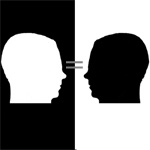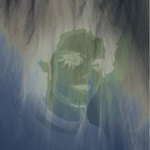 People who think deeply about the puzzle cases of personal identity have come up with a variety of bold and radical responses. Like Alexander hacking through the Gordian knot, Parfit wielded an analytical scalpel to divide personal identity from what matters in personal survival, reaching the conclusion that ordinary survival is about as bad as being destroyed and replaced by a replica. Robert Nozick was so impressed by the difficulties posed by fission cases that he decided personal identity must depend on extrinsic factors: you are identical to whatever person is your closest continuer at any future time, a thesis with the odd consequence that, if your closest continuer after fission dies, you may suddenly find yourself being someone who until that time was someone else, your second-closest continuer. David Lewis’ solution to was to abandon the tried-and-true principle that persons can be counted by counting heads. Since there are two persons after fission, there were two all along, even though, before fission, they occupied the same body and were unaware of their duality. (Bizarre though it sounds, I support Lewis’ solution as one that inflicts the least damage to the traditional concept of a person.) Thomas Metzinger’s analysis led him to conclude that “no such things as selves exist in the world.”
People who think deeply about the puzzle cases of personal identity have come up with a variety of bold and radical responses. Like Alexander hacking through the Gordian knot, Parfit wielded an analytical scalpel to divide personal identity from what matters in personal survival, reaching the conclusion that ordinary survival is about as bad as being destroyed and replaced by a replica. Robert Nozick was so impressed by the difficulties posed by fission cases that he decided personal identity must depend on extrinsic factors: you are identical to whatever person is your closest continuer at any future time, a thesis with the odd consequence that, if your closest continuer after fission dies, you may suddenly find yourself being someone who until that time was someone else, your second-closest continuer. David Lewis’ solution to was to abandon the tried-and-true principle that persons can be counted by counting heads. Since there are two persons after fission, there were two all along, even though, before fission, they occupied the same body and were unaware of their duality. (Bizarre though it sounds, I support Lewis’ solution as one that inflicts the least damage to the traditional concept of a person.) Thomas Metzinger’s analysis led him to conclude that “no such things as selves exist in the world.”
In his book, I am You, Daniel Kolak offers yet another radical theory of personal identity: There is only one person, and that person is all of us. What are commonly understood to be boundaries between individuals, he says, do not “merit the metaphysical significance ordinarily accorded to them.”
Our borders do not signify boundaries between persons. We are all the same person. [Kolak, 2010, p 1] Continue reading “Kolak: I Am You”


 In recent weeks, I have been devouring
In recent weeks, I have been devouring